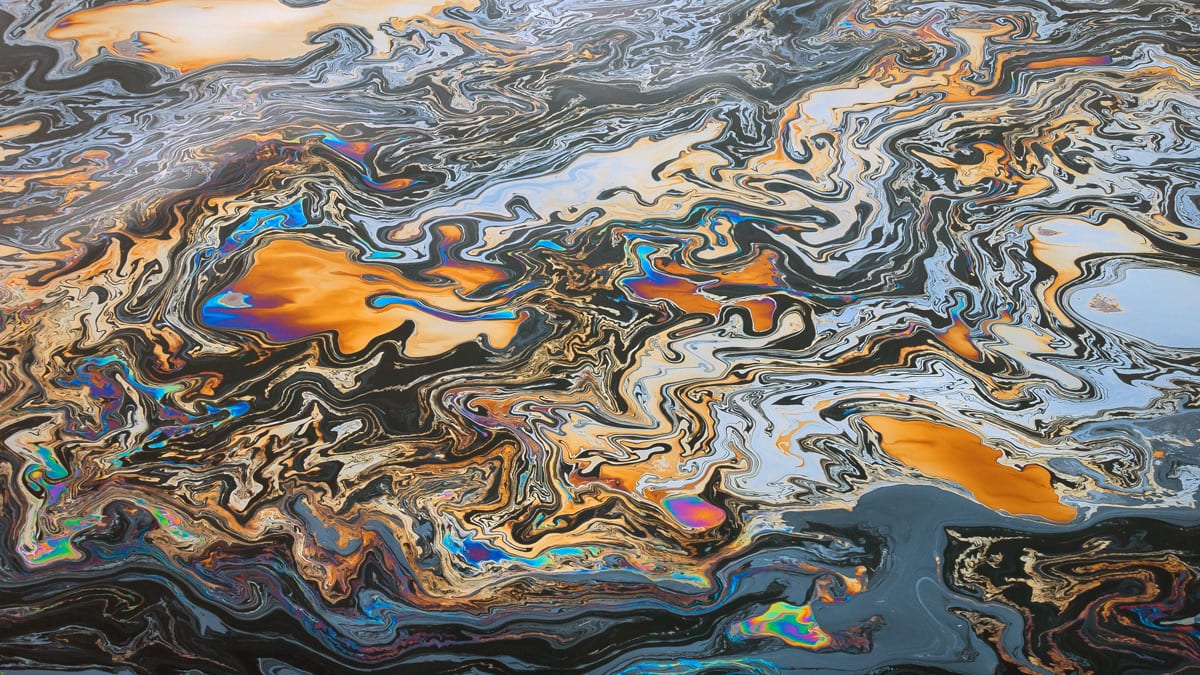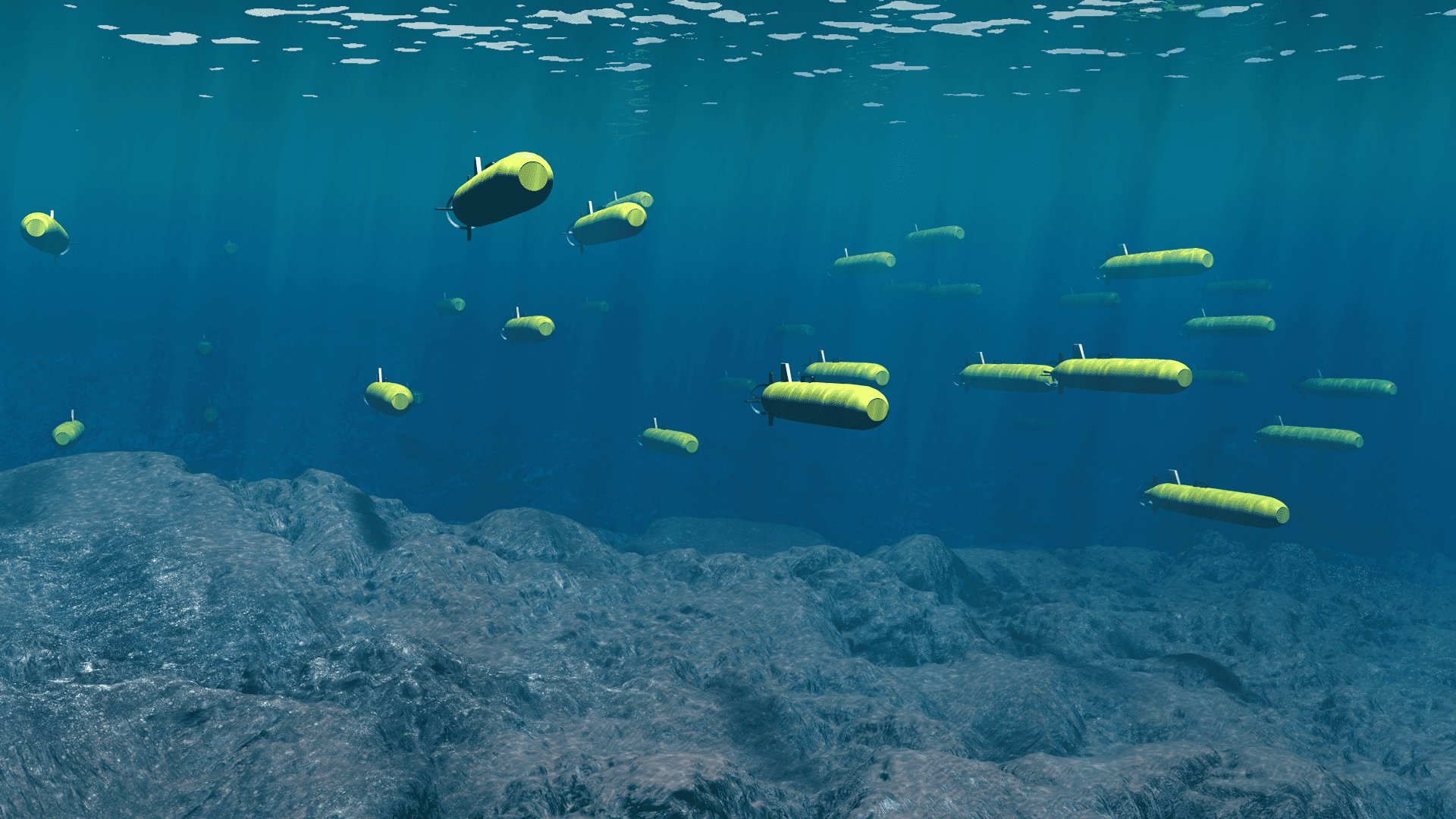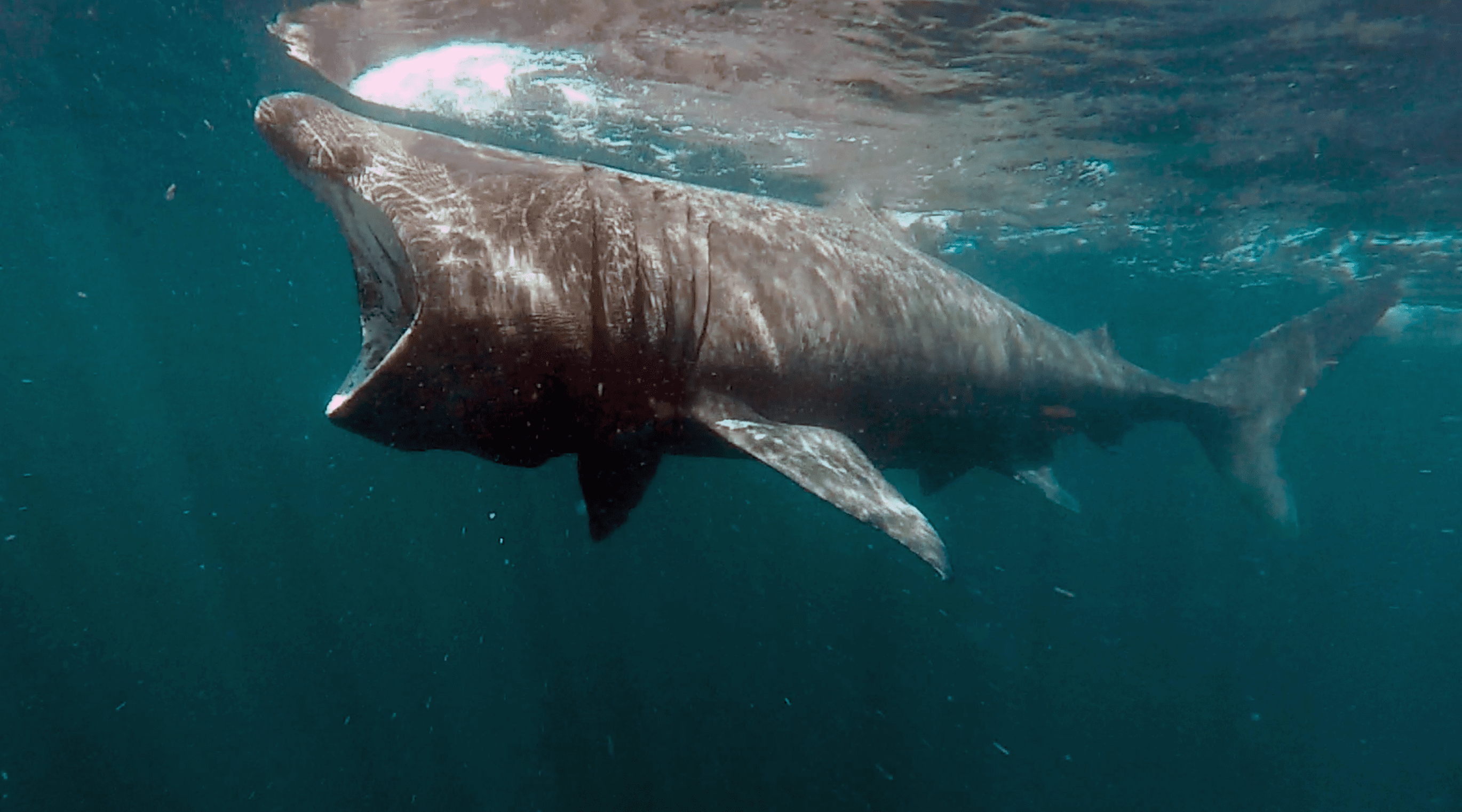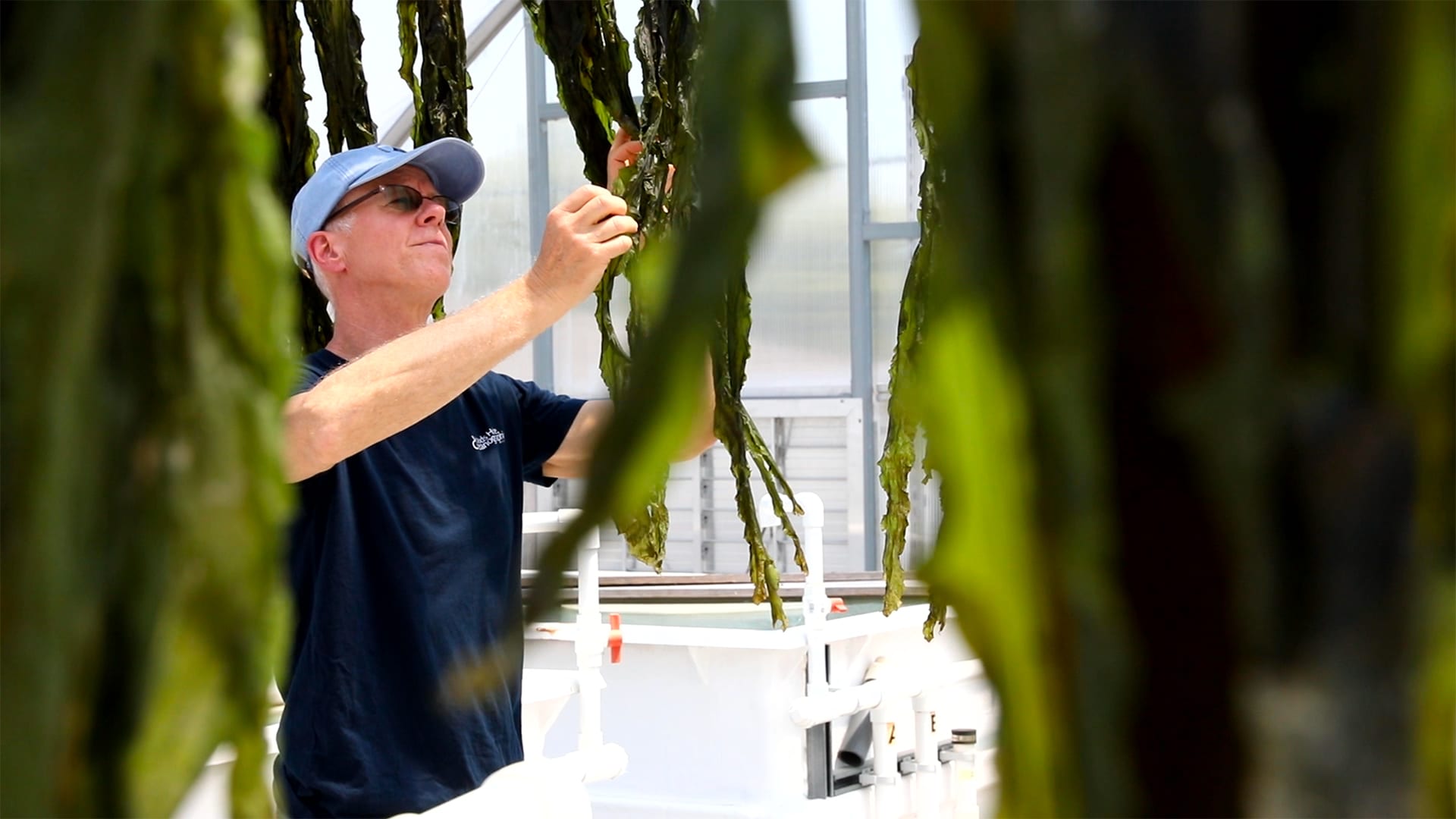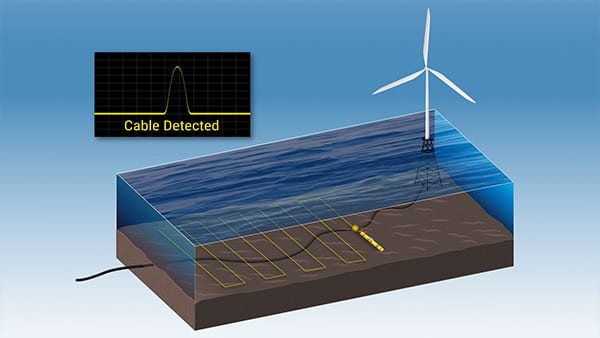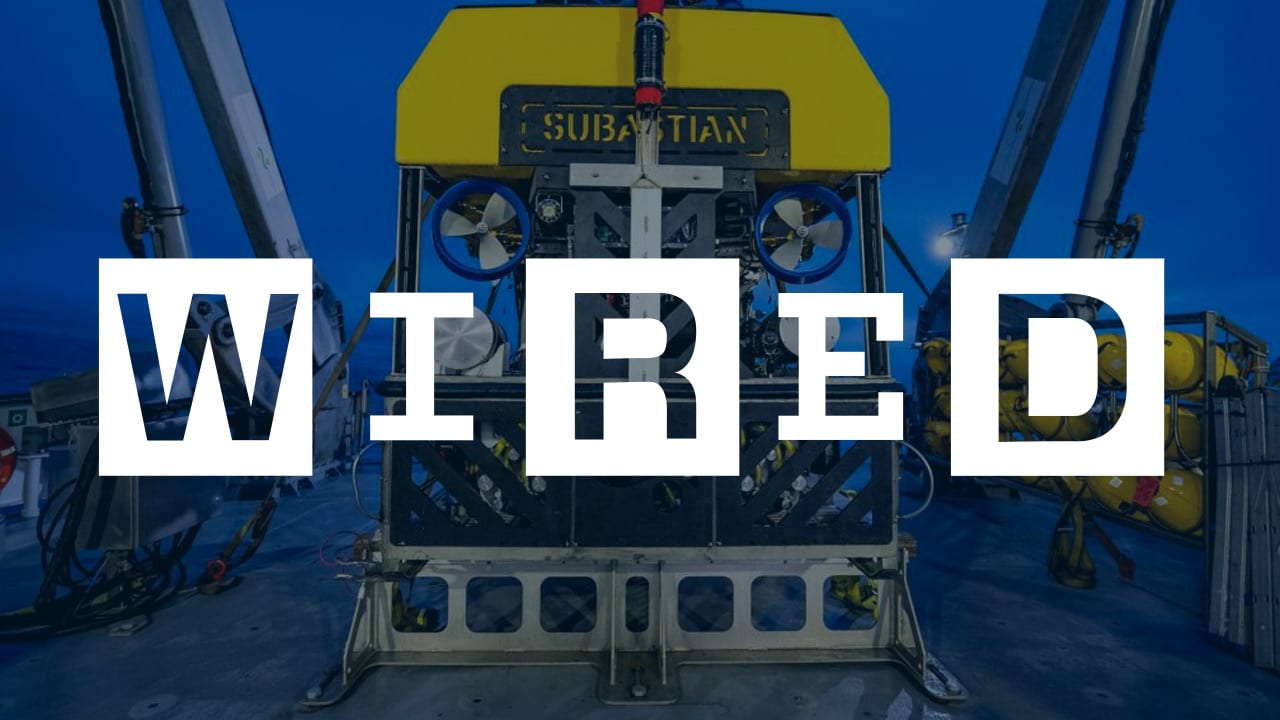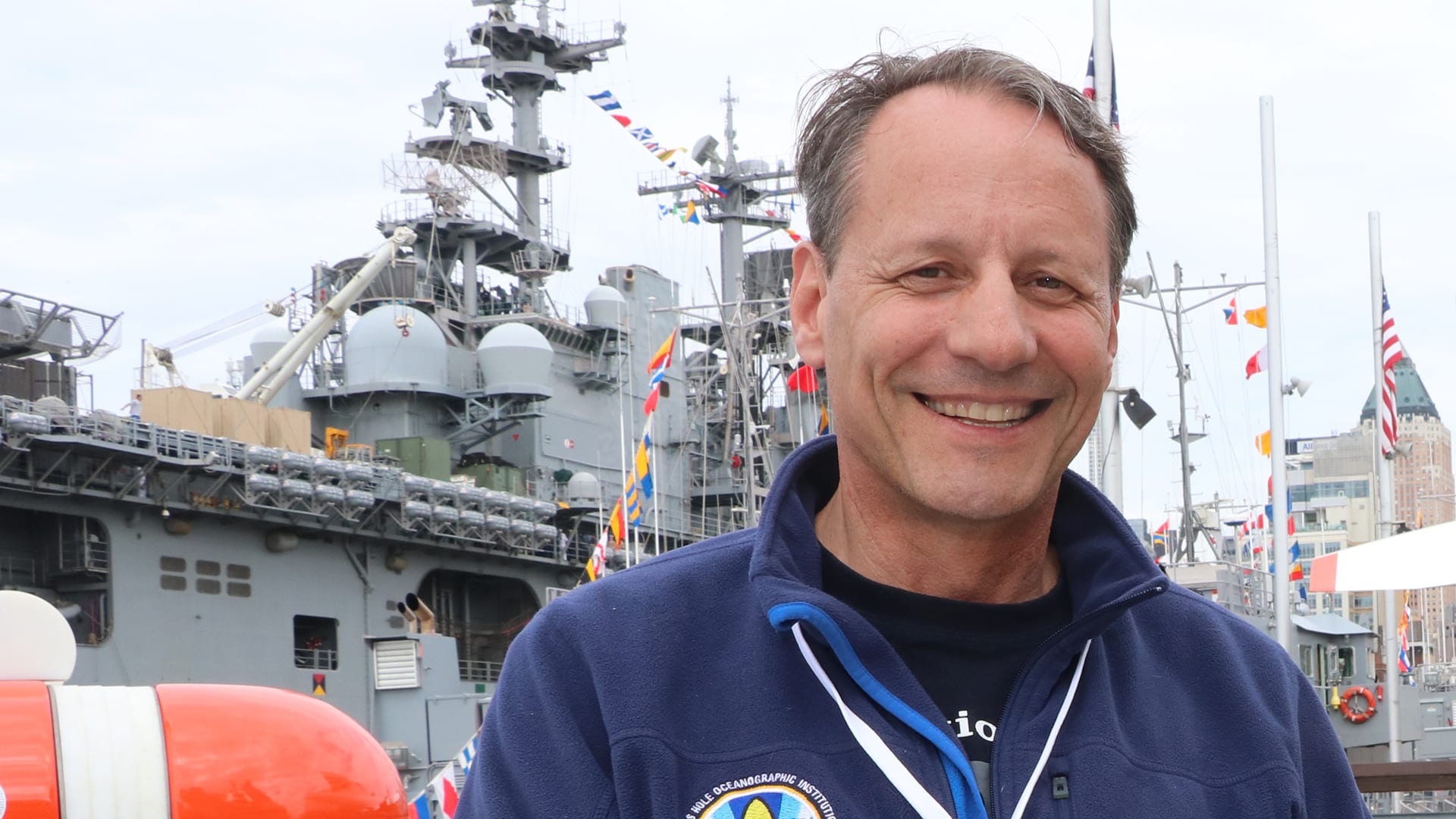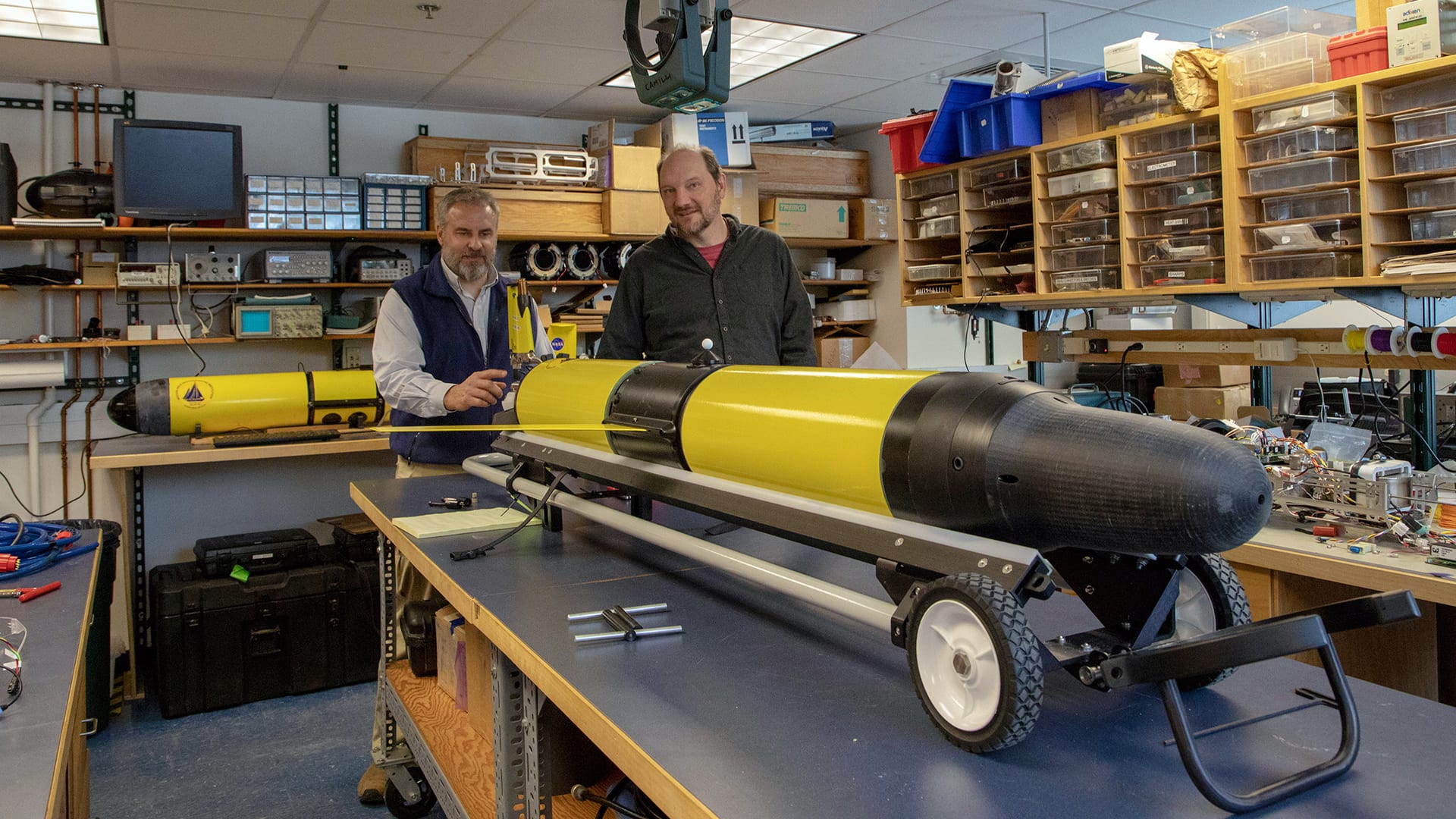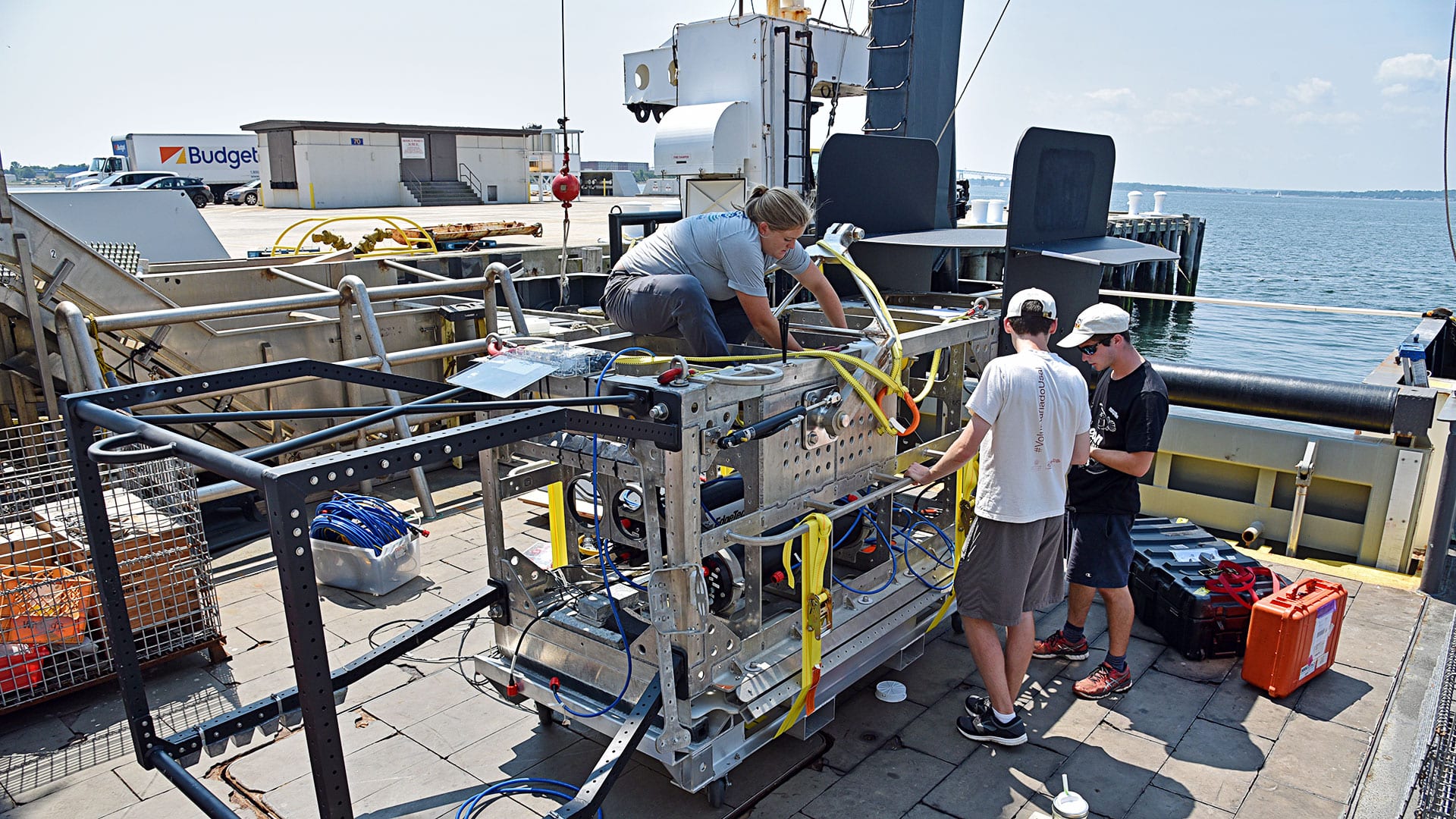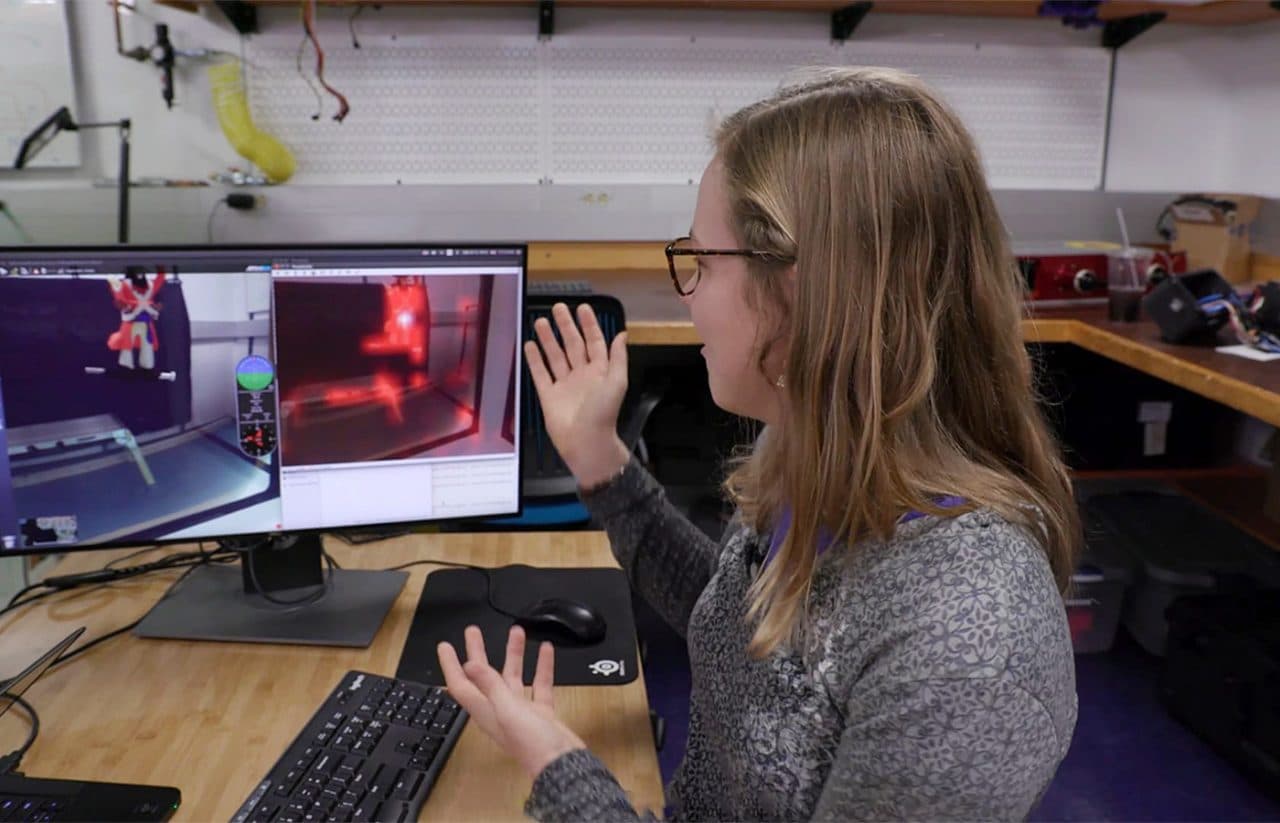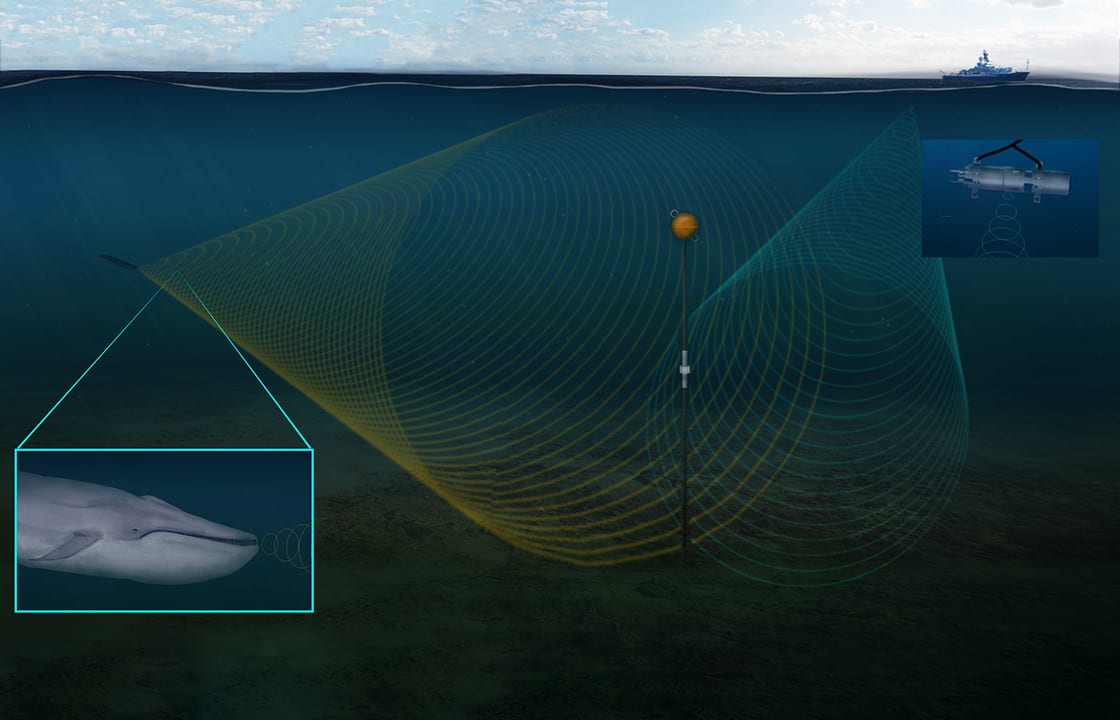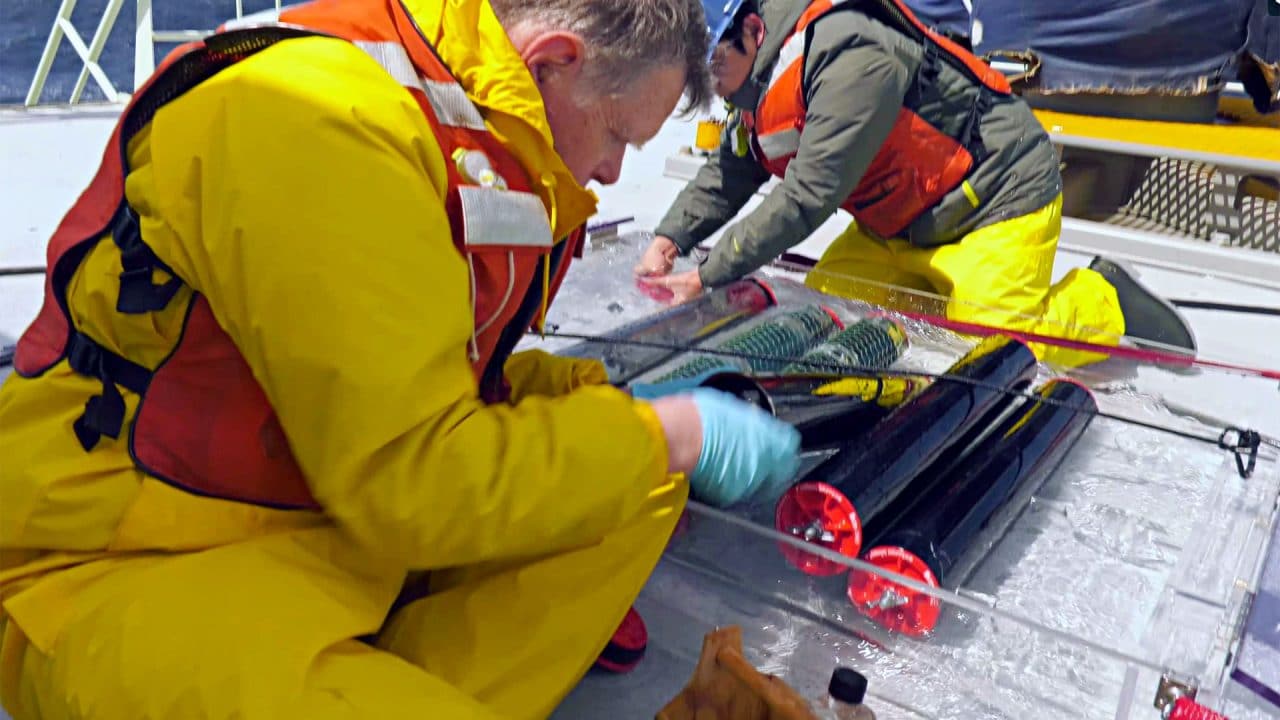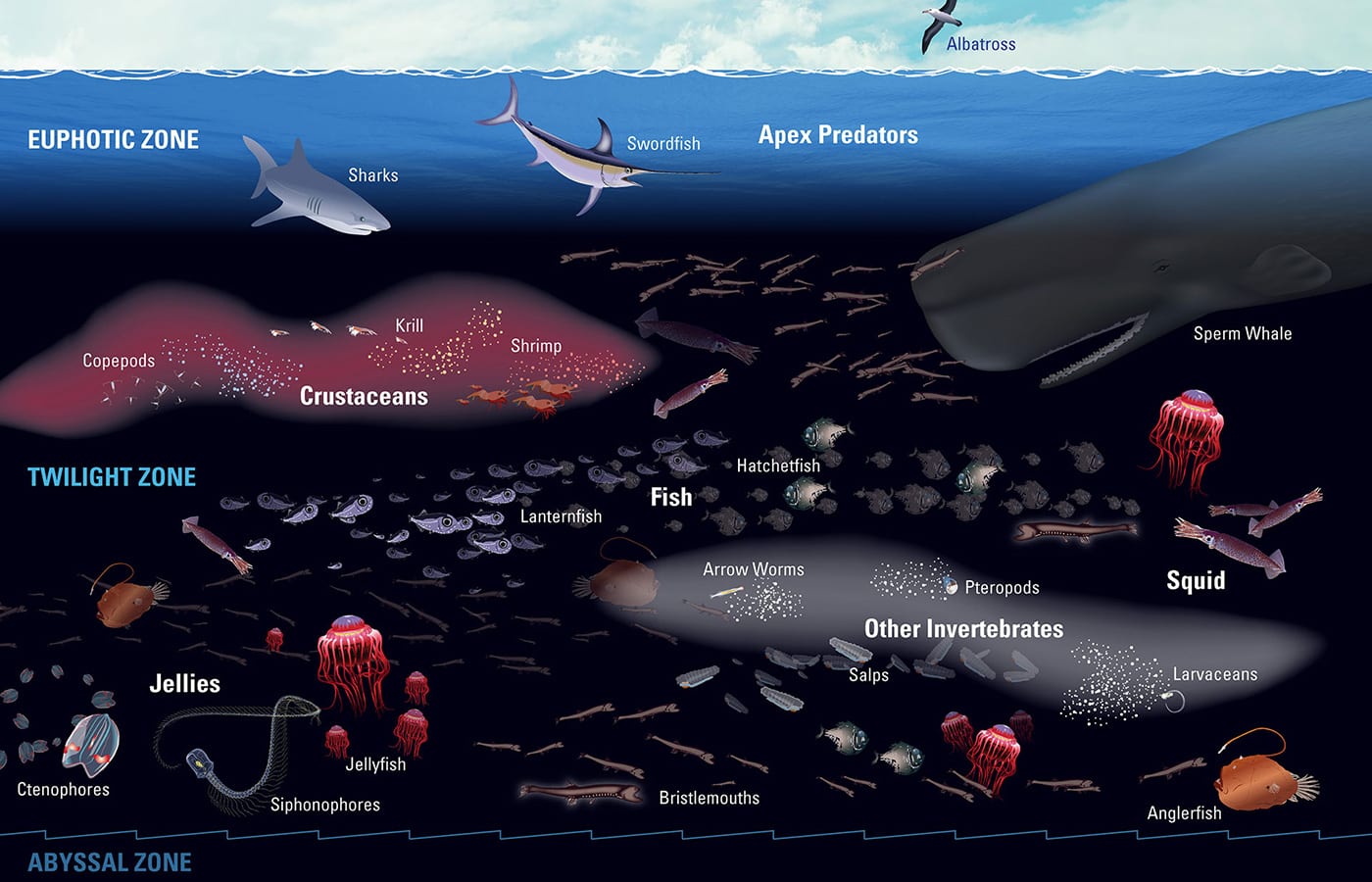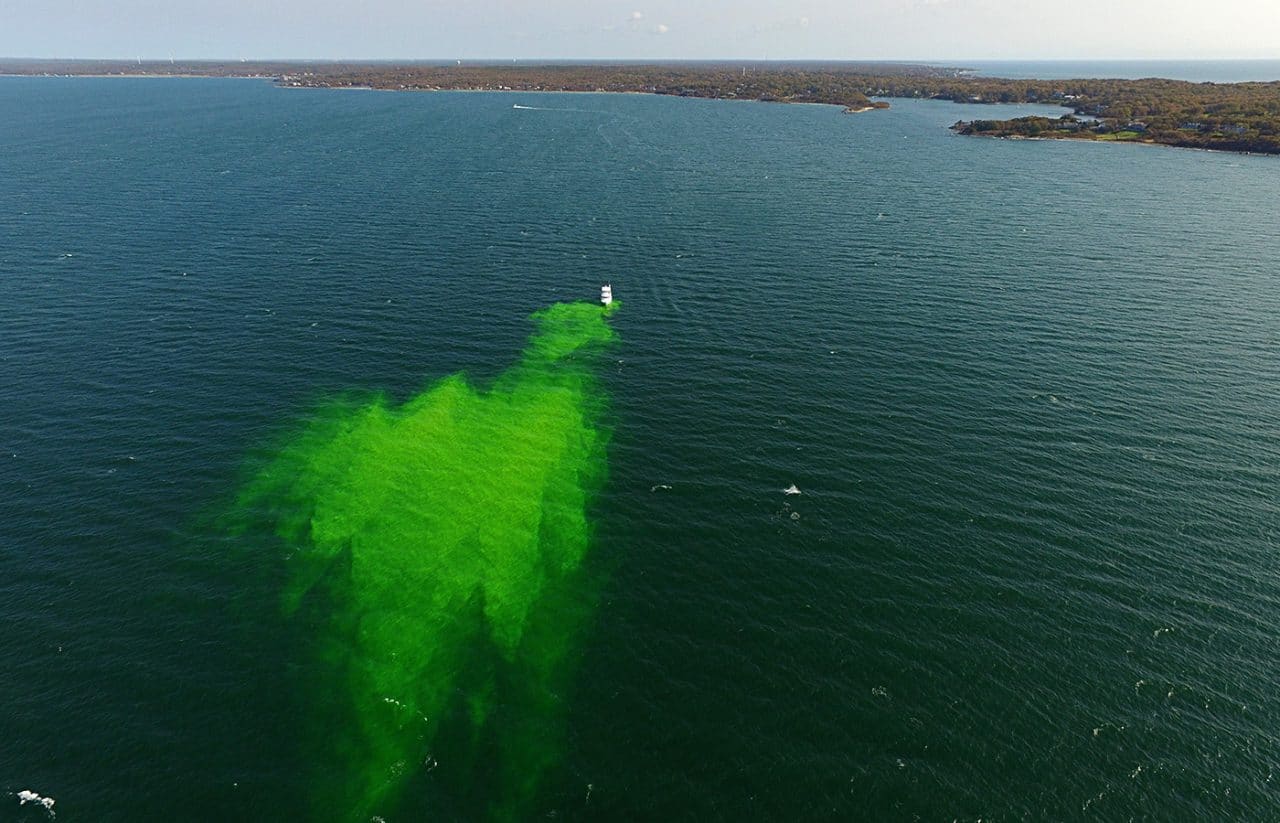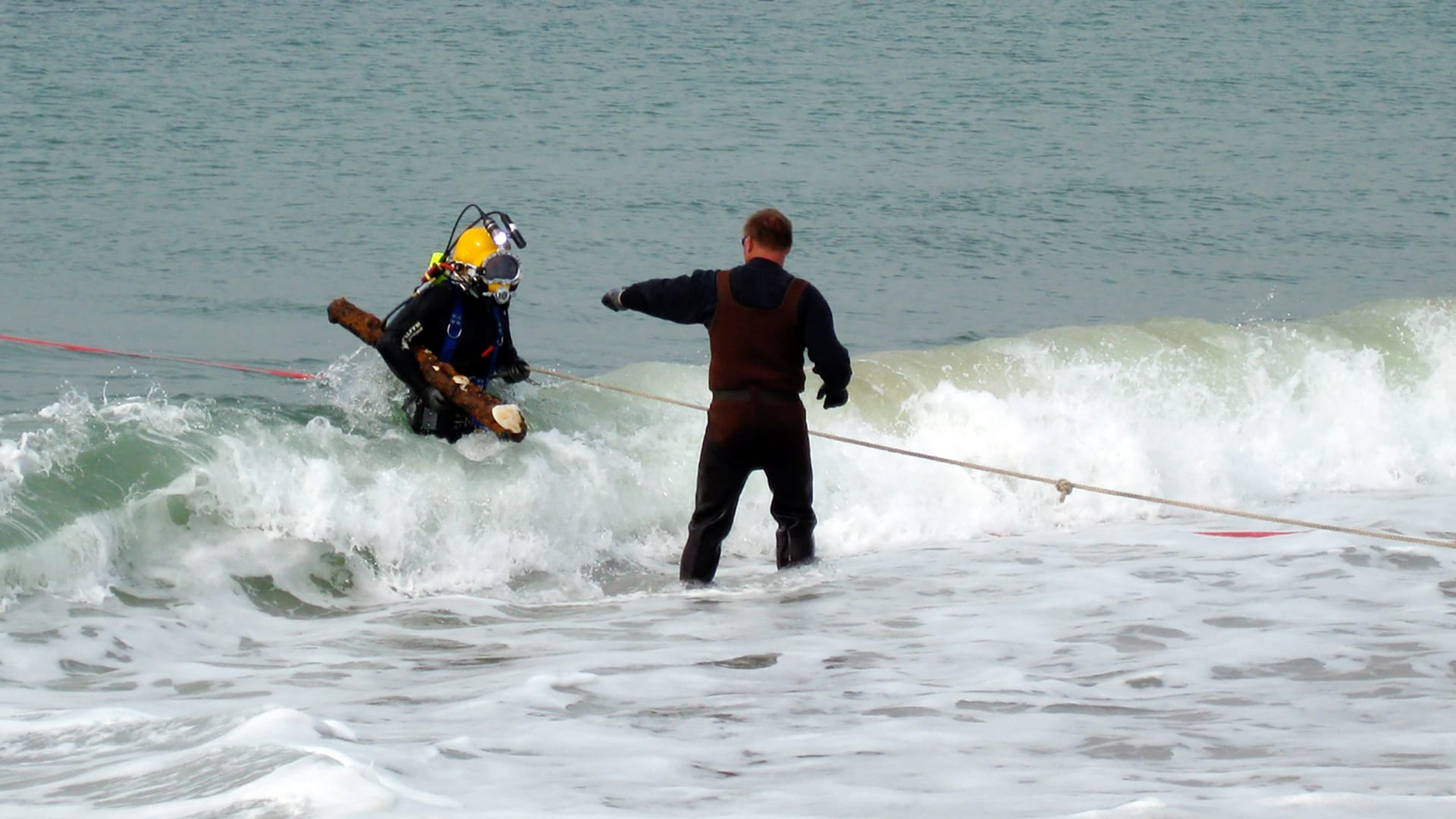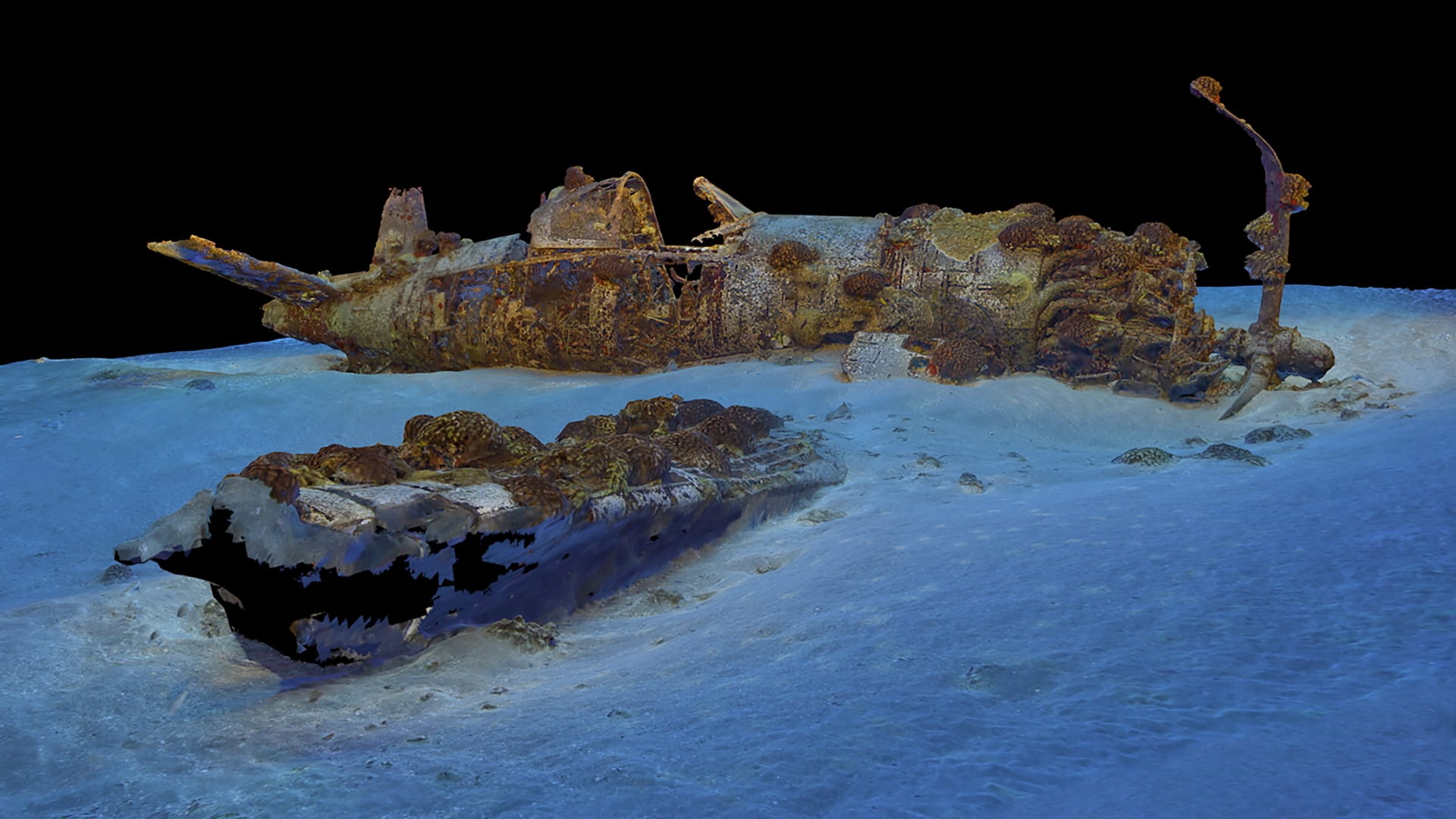Applied Ocean Physics & Engineering
Rapid Response at Sea
As sea ice continues to melt in the Arctic and oil exploration expands in the region, the possibility of an oil spill occurring under ice is higher than ever. To help first responders cope with oil trapped under ice, ocean engineers are developing undersea vehicles that can map oil spills to improve situational awareness and decision making during an emergency.
Read MoreLocal fishermen assist leatherback research
After several years, Kara Dodge began to do other work with turtles, in particular a “TurtleCam” project with Woods Hole Oceanographic Institution engineer Amy Kukulya. The project involved tagging and…
Read MoreNew Technology Will Listen For Underwater Whale Traffic In An Effort To Reduce Ship Strikes
Scientists from the Benioff Ocean Initiative and Woods Hole Oceanographic Institution have deployed a a hydrophone, or underwater microphone, to listen for whale traffic in the Santa Barbara Channel. They…
Read MoreUnderwater robots swarm the ocean
Researchers test a new, acoustic-based navigation system to solve a problem that oceanographers have grappled with for years—getting multiple underwater robots to monitor the ocean cooperatively in swarm-like fashion.
Read MoreScientists Team With Fishermen on Tracking Technology
Scientists from the Center for Coastal Studies and the Woods Hole Oceanographic Institution are working with local commercial fishermen to install video monitoring equipment on gillnets.
Read MoreSharkCam reveals secret lives of basking sharks in UK
An autonomous underwater vehicle (AUV) known as the REMUS SharkCam has been used in the UK for the first time to observe the behaviour of basking sharks in the Inner Hebrides, off the west coast of Scotland.
Read MoreInfrared Cameras Could Help Ships Avoid Whales
An interview with Dan Zitterbart, a WHOI scientist who is testing a new thermal infrared imaging system to detection whales in busy waterways to prevent ship strikes.
Read MoreKing Kelp
To help fuel our future energy needs, researchers are sizing up thousands of blades of sugar kelp—a promising source of biofuels—to breed strains that grow larger, heartier, and more abundantly.
Read MoreA new way of “seeing” offshore wind power cables
Eager to share best practices and technical know-how with the offshore wind sector, WHOI researchers test out an autonomous underwater vehicle (AUVs)—a staple of oceanographic research—to see if it can perform subsea cable surveys faster and more economically than using large and expensive ships.
Read MoreWIRED Magazine: Seafloor Maps Reveal Active Fault Lines
Imagining new vehicles for exploration
Andy Bowen is the kind of guy who wakes up in the middle of the night unable to go back to sleep, because he’s just too excited about a solution he’s just imagined for a new robotic invention.
Read MoreNavigating the Changing Arctic
New, fully autonomous glider will collect critical-but-scarce ice thickness measurements from below the surface of the Arctic ocean.
Read MoreNavigating the Changing Arctic
New, fully autonomous glider will collect critical-but-scarce ice thickness measurements from below the surface of the Arctic ocean.
Read MoreWoods Hole Model Boat Show
How to celebrate National Robotics Week in Massachusetts
The Deep-See Peers into the Depths
Decades of research from many WHOI scientists and engineers have culminated in a multifaceted vehicle to explore deep-sea marine life.
Read MoreCoding Curiosity
The ocean is an extreme environment that is hard for humans to explore. One solution is building deep-sea robots that can autonomously make decisions on what to look for and where.
Read MoreWarping Sound in the Ocean
WHOI scientists warp sound–the primary means of transmitting information in the ocean–to “see” what’s happening below the surface.
Read MoreLife at the Edge
What makes the shelf break front such a productive and diverse part of the Northwest Atlantic Ocean? A group of scientists on the research vessel Neil Armstrong spent two weeks at sea in 2018 as part of a three-year, NSF-funded project to find out.
Read MoreThe Discovery of Hydrothermal Vents
In 1977, WHOI scientists made a discovery that revolutionized our understanding of how and where life could exist on Earth and other planetary bodies.
Read MoreMission to the Ocean Twilight Zone
The twilight zone is a part of the ocean 660 to 3,300 feet below the surface, where little sunlight can reach. It is deep and dark and cold, and the pressures there are enormous. Despite these challenging conditions, the twilight zone teems with life that helps support the ocean’s food web and is intertwined with Earth’s climate. Some countries are gearing up to exploit twilight zone fisheries, with unknown impacts for marine ecosystems and global climate. Scientists and engineers at Woods Hole Oceanographic Institution are poised to explore and investigate this hidden frontier.
Read MoreTo Track an Oil Spill
WHOI scientists are helping to develop a robotic underwater vehicle that can track oil spills and help responders mitigate damage in remote or ice-covered areas such as the Arctic Ocean and the Great Lakes.
Read MoreTracking Unexploded Munitions
U.S. coastlines still have a lot of unexploded ordnance, or UXOs, left offshore by military exercises in the 1940s and 1950s. WHOI scientist Peter Traykovski is investigating where UXOs are and how they are moved and buried along the coast.
Read MoreRe-envisioning Underwater Imaging
A revolutionary new underwater imaging system developed at Woods Hole Oceanographic Institution can generate ultrahigh-definition television video, 2-D mosaic images, and 3-D optical models—images that scientists can spin to view from…
Read More
